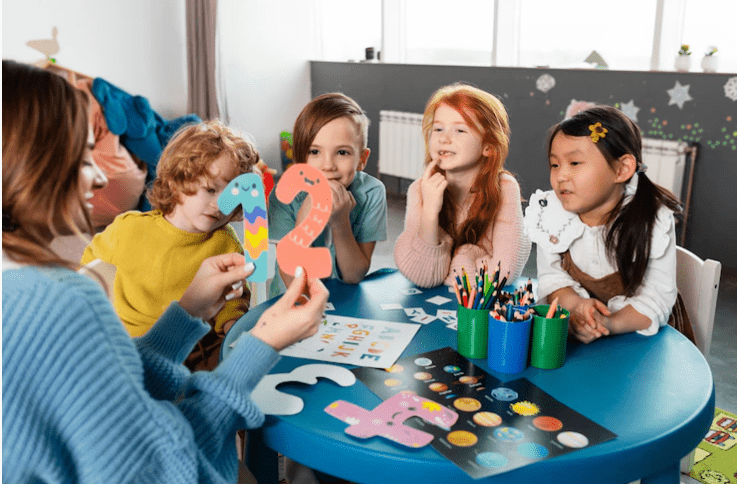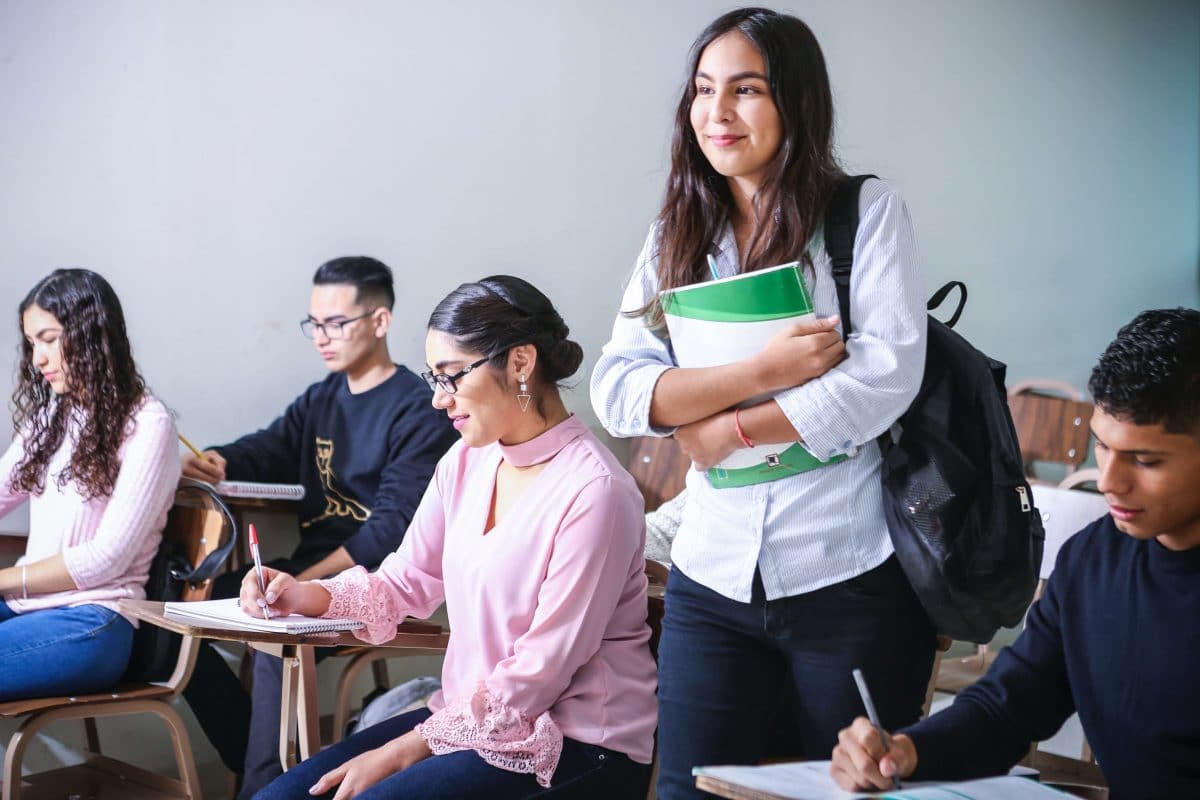
Montessori vs. Traditional Methods
Choosing the right educational approach for your child can feel like navigating a maze. With so many options available, it’s crucial to understand the differences between popular methods. Two of the most talked-about are Montessori and traditional education. Each has its own philosophy, principles, and outcomes that cater to different learning styles.
Have you ever wondered how these two approaches stack up against each other? Whether you’re a parent exploring schooling options or an educator seeking insight into effective teaching strategies, understanding Montessori vs. traditional methods is key. Let’s dive into what makes each unique, their benefits and challenges, and how to decide which path might be best for your child’s development!

What is Montessori Education?
Montessori education is an innovative approach to learning that emphasizes child-led exploration and hands-on experiences. Developed by Dr. Maria Montessori in the early 1900s, this method encourages independence and a love for learning.
In a Montessori classroom, children engage with specially designed materials that cater to various developmental stages. The environment is carefully prepared to foster curiosity and creativity.
Teachers act as guides rather than traditional instructors, allowing students to learn at their own pace. This nurturing atmosphere promotes self-discipline and critical thinking skills.
Another hallmark of Montessori education is mixed-age classrooms, where younger students can learn from older peers while older ones reinforce their knowledge by teaching concepts they’ve mastered. This collaborative setting creates a strong sense of community among students.
Montessori education seeks to develop not just academic skills but also social awareness and emotional intelligence in each child.
History of Montessori Education
The roots of Montessori education date back to the early 1900s. Dr. Maria Montessori, an Italian physician, developed her unique teaching methods after observing children in various environments.
Her first school, Casa dei Bambini, opened in 1907 in Rome. It showcased a new approach focused on child-led learning and hands-on activities.
Montessori’s philosophy was revolutionary at the time. She believed that children learn best when they can explore their interests freely. This perspective challenged traditional educational norms that prioritized rote memorization and standardized testing.
Over the decades, Montessori education spread worldwide. Schools began adopting her techniques across Europe and later in North America and beyond.
Today, it continues to evolve while staying true to its foundational principles of respect for each child’s individuality and nurturing their innate curiosity about the world around them.

Key Principles and Methods of Montessori Education
Montessori education revolves around a few key principles that set it apart from traditional methods. At its core is the belief in child-led learning. Children are encouraged to explore subjects at their own pace, fostering independence and self-motivation.
Another essential principle is respect for the child as an individual. Each learner’s unique interests and developmental stages guide their educational journey, allowing them to engage deeply with topics they are passionate about.
The classroom environment is carefully designed to promote hands-on learning. Montessori materials are tactile and interactive, encouraging exploration through senses rather than rote memorization.
Collaboration plays a significant role as well. Mixed-age classrooms foster peer-to-peer learning, where older students mentor younger ones, enhancing social skills alongside academic growth.
These principles create a nurturing atmosphere where children thrive academically and emotionally, laying a strong foundation for lifelong learning experiences.
Benefits of Montessori Education
Montessori education offers a wealth of benefits that cater to the diverse needs of children. One standout feature is its focus on fostering independence. Children learn to make choices and take responsibility for their learning, which builds confidence.
Another significant advantage is the emphasis on hands-on experiences. Montessori classrooms are filled with engaging materials that invite exploration and discovery. This approach ignites children’s natural curiosity.
Social skills thrive in this environment too. Mixed-age classrooms encourage collaboration and peer learning, allowing younger students to benefit from older ones while enhancing leadership qualities in the older kids.
Moreover, the child-centered curriculum adapts to individual interests and learning paces, making education more meaningful. In such an atmosphere, children develop critical thinking skills as they navigate challenges at their own speed.
Creativity flourishes as well because there’s room for self-expression through various activities like art or music integrated into daily routines.

Criticisms of Montessori Education
Critics of Montessori education often point to its unstructured environment as a potential drawback. They argue that children may struggle with self-discipline and time management without traditional oversight.
Some educators believe that the absence of standardized testing can hinder students’ ability to compete academically in more rigorous settings. This concern raises questions about preparedness for future educational challenges.
Additionally, parents may worry about socialization opportunities. While Montessori classrooms foster collaboration, some feel that children might miss out on competitive scenarios found in traditional schools.
Not all Montessori programs adhere strictly to Dr. Maria Montessori’s original methods. Variations in implementation can lead to inconsistencies, leaving parents uncertain about the quality of their child’s education within this framework.
Traditional Education: How Does it Differ from Montessori?
Traditional education primarily centers around a teacher-led model. The instructor delivers knowledge through lectures and standardized curriculums. Students often sit in rows, focusing on individual tasks, with less emphasis on collaboration.
In contrast, Montessori encourages self-directed learning. Children explore subjects at their own pace using hands-on materials designed to stimulate curiosity. This method fosters independence and critical thinking from an early age.
Assessment in traditional systems typically involves tests and grades that measure rote memorization. Montessori assessments are more qualitative, focusing on individual progress and mastery of concepts over time.
Another notable difference lies in classroom structure. Traditional classrooms often have fixed schedules that dictate when students learn specific subjects, while Montessori environments allow for flexibility, adapting to each child’s interests and needs as they arise.
Pros and Cons of Traditional Education
Traditional education offers structure and routine. Students follow a set curriculum, which can lead to a well-rounded knowledge base. This method often emphasizes standardized testing, providing measurable outcomes for academic performance.
However, the rigidity of traditional systems can stifle creativity. The focus on rote memorization may not cater to diverse learning styles. Some students thrive in structured environments while others feel constrained.
Additionally, teacher-centered classrooms might limit student engagement. Learners often sit passively as information is delivered from the front of the room rather than participating actively in their education.
Social skills development can be another mixed bag; while students interact with peers regularly, group work may sometimes take a backseat to individual assignments. Balancing these elements becomes crucial for fostering an effective learning environment.

Choosing the Right Educational Approach for Your Child
Choosing the right educational approach for your child can feel overwhelming. Each child is unique, with their own learning style and needs.
Consider your child’s personality first. Do they thrive in structured environments or do they need a more flexible setting? Observing how they engage with different activities at home can provide insights.
Think about your family’s values too. Montessori emphasizes independence and self-directed learning, while traditional methods often focus on standardized curricula.
Visit schools if possible. Pay attention to the atmosphere—does it seem nurturing? Are children engaged and happy?
Don’t hesitate to ask questions about curriculum and teaching styles. Understanding what motivates educators can help you align their methods with your goals for your child’s education.
Trust your instincts as a parent. You know your child best; that intuition will guide you in making the right choice for their future development.
Conclusion
When it comes to choosing the right educational approach for your child, understanding the differences between Montessori and traditional methods is crucial. Both systems have unique philosophies that cater to different learning styles and needs.
Montessori education emphasizes self-directed learning, hands-on experiences, and collaborative play. It nurtures independence in children and encourages them to follow their interests at their own pace. This method has shown positive results in fostering creativity, critical thinking skills, and a love of learning.
On the other hand, traditional education often follows a structured curriculum with set goals for all students. While it can provide a solid foundation in core subjects like math and reading, it may not fully accommodate diverse learning preferences or allow for as much individual exploration.
The choice between Montessori vs. traditional methods should reflect your child’s personality and learning style. Some thrive under guided instruction while others flourish with autonomy. By exploring both approaches thoroughly—considering benefits as well as criticisms—you can make an informed decision that sets your child on a path toward success in school and beyond.
Whether you lean towards one method or find value in blending aspects from both approaches, what matters most is supporting your child’s development holistically. It’s about ensuring they engage meaningfully with their education while growing into confident learners ready to tackle life’s challenges ahead.



Leave a Reply